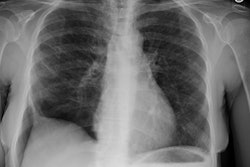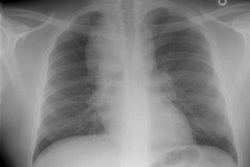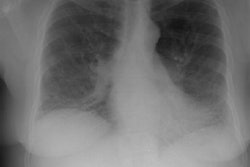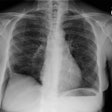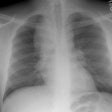Mounier-Kuhn Syndrome (Tracheobronchomegaly):
View cases of tracheobronchomegaly
Clinical:
Tracheobronchomegaly is of uncertain etiology, but the disorder is associated with Ehlers-Danlos syndrome. Most cases are sporadic and affect males (particularly African Americans). Only about 5% of affected patients are female. Patients usually present as young adults (4th or 5th decade) with complaints of recurrent infections and chronic cough. The disorder is characterized by dilatation of trachea (greater than 3 cm), mainstem bronchi (right over 2 cm, left over 1.5 cm) and bronchiectasis. Pathologically there is atrophy of the muscular and elastic elements of the trachea and central bronchi- with an abrupt change to normal caliber at the forth or fifth order of bronchial division. Because of the absence of normal cartilage, the trachea and bronchi can collapse during coughing or normal expiration. As a result of this ineffective cough mechanism, patients have retention of secretions and an increased incidence of recurrent pneumonias (bronchiectasis may be the result of recurrent infections).
X-ray:
CXR: On the PA radiograph, the trachea normally measures 13-25 mm in males, and 10-21 mm in females. On the lateral view, it measures 13-27 mm in males, and 10-23 mm in females. Tracheobronchomegaly is defined as a transverse tracheal dimension greater than 25 mm, or a sagittal diameter greater than 27 mm [4]. Dynamic airway collapse can be demonstrated on CT during expiration.
(1) J Thorac Imaging 1995;10(4):227-235 (p229)
(2) J Thorac Imaging 1995;10(4):255-267 (p260)
(3) AJR 1996; Chest case of the day. Tracheobronchomegaly--the Mounier-Kuhn syndrome. 167(1): 235 (No abstract available)
(4) AJR 2001; Marom EM, et al. Diffuse abnormalities of the trachea and main bronchi. 176: 713-717

